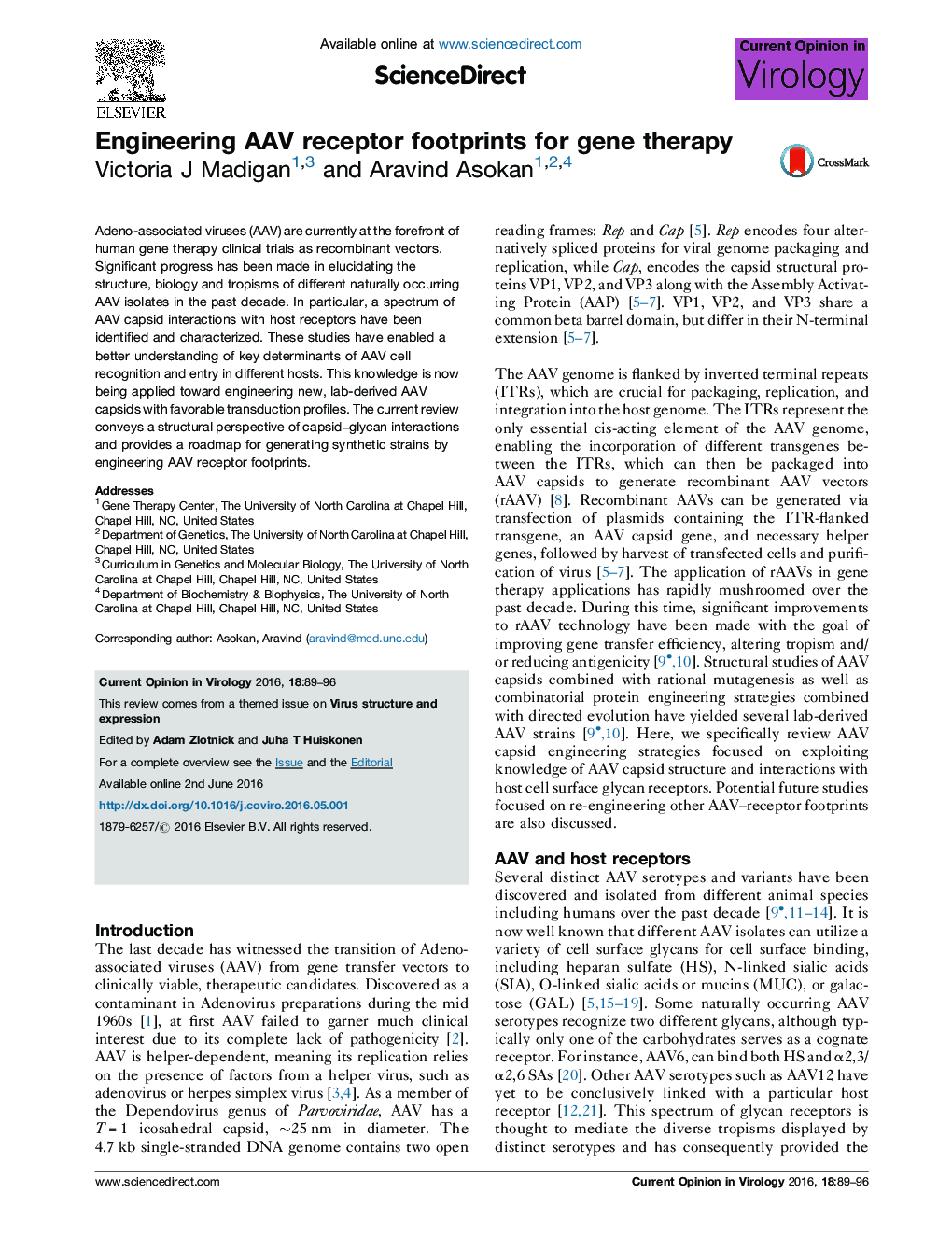| Article ID | Journal | Published Year | Pages | File Type |
|---|---|---|---|---|
| 5806590 | Current Opinion in Virology | 2016 | 8 Pages |
â¢Recognition of host receptors is a crucial determinant of AAV cell entry and tropism.â¢Several AAV capsid-glycan interactions have been identified and characterized.â¢Structural studies have mapped glycan receptor footprints on the AAV capsid surface.â¢Engineering glycan receptor footprints can yield new, synthetic AAV strains with altered tropisms and favorable transduction profiles.
Adeno-associated viruses (AAV) are currently at the forefront of human gene therapy clinical trials as recombinant vectors. Significant progress has been made in elucidating the structure, biology and tropisms of different naturally occurring AAV isolates in the past decade. In particular, a spectrum of AAV capsid interactions with host receptors have been identified and characterized. These studies have enabled a better understanding of key determinants of AAV cell recognition and entry in different hosts. This knowledge is now being applied toward engineering new, lab-derived AAV capsids with favorable transduction profiles. The current review conveys a structural perspective of capsid-glycan interactions and provides a roadmap for generating synthetic strains by engineering AAV receptor footprints.
